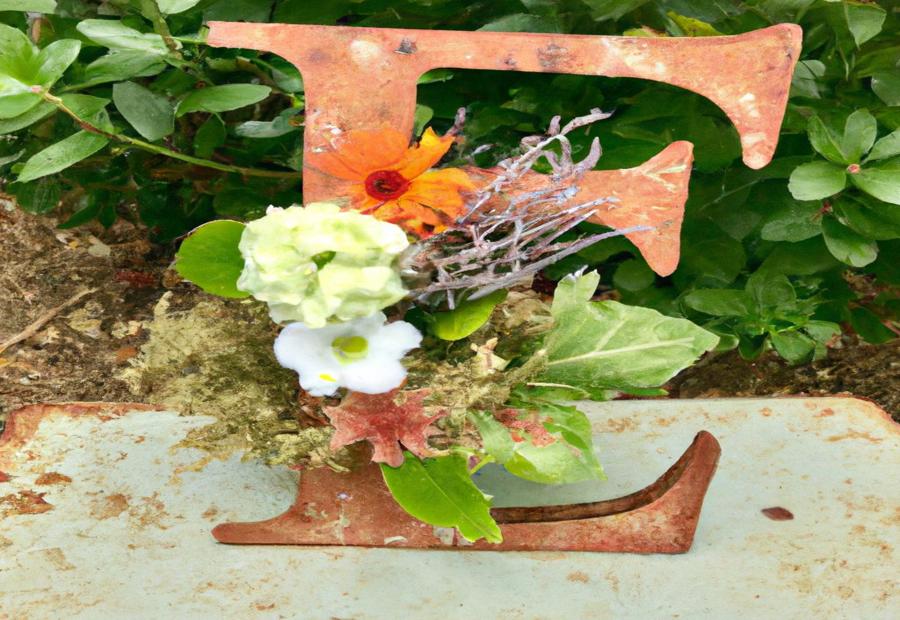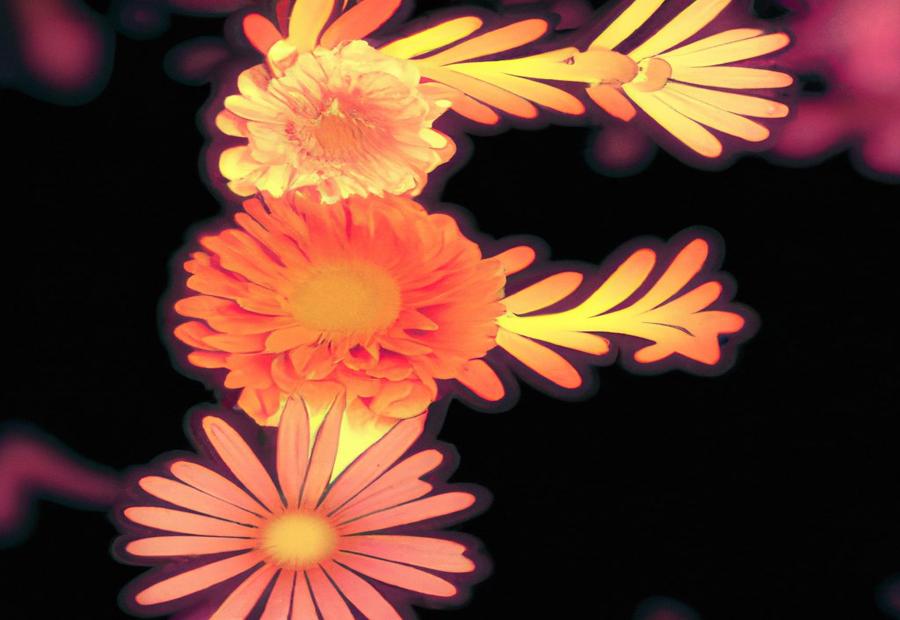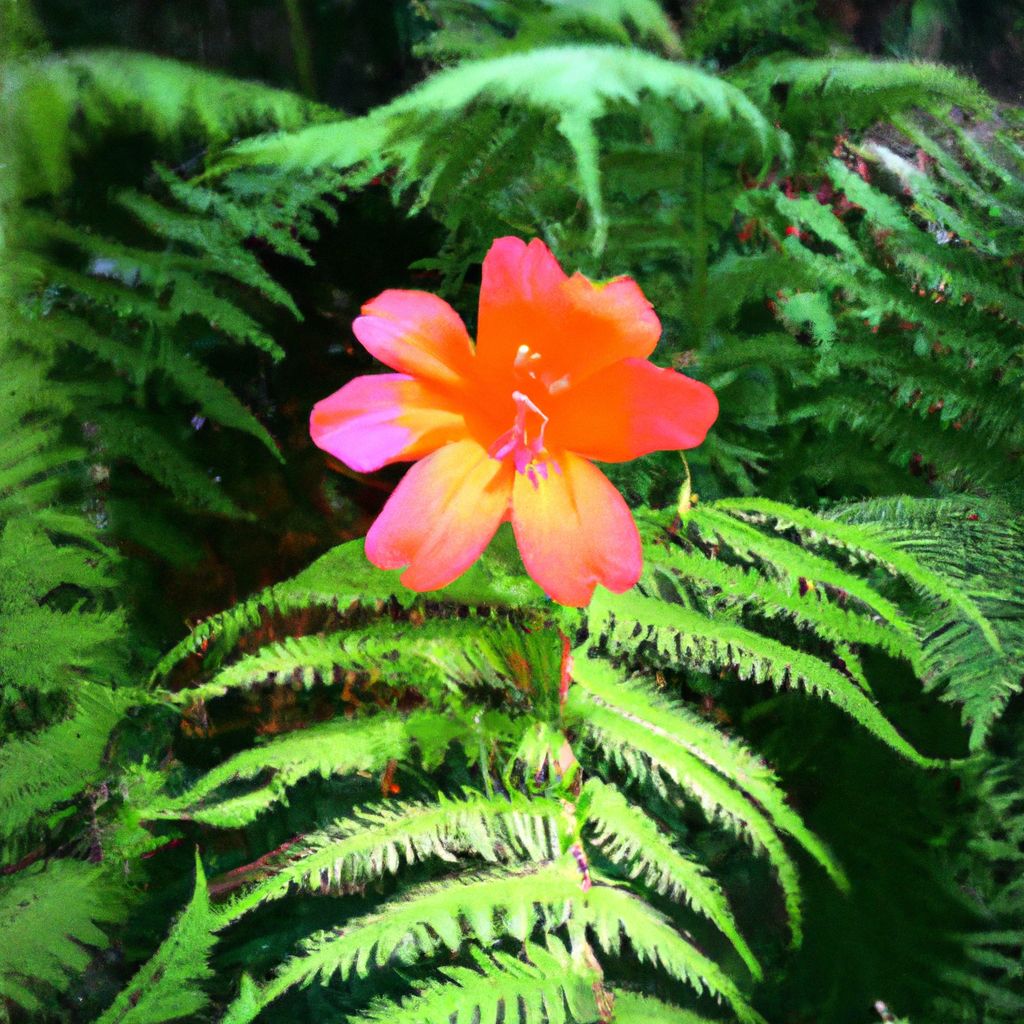Key takeaway:
- Fabulous Flowers that Start with F include: Fan Flower, Flax Flower, Floss Flower, Flowering Tobacco, Forget-Me-Not, Four O’Clock, Freesia, French Marigold, Fuchsia, Fritillaria, Flannel Flower, and Feverfew.
- These flowers add beauty and variety to gardens and floral arrangements.
- Each flower has its own unique characteristics and growth requirements, so it’s important to research and understand the specific needs of each type when considering them for your garden.
Introduction

Photo Credits: Gardeninggurus.Org by Eugene King
Introduction:
Flowers are a source of beauty and fragrance. They range in shape, size, and color and can be found everywhere. People often use them for decoration and to express different feelings. They also play an important role in pollination and plant reproduction. Flowers have a unique character that captivates scientists and horticulturists alike. Petals, sepals, and stamens have special purposes in the reproductive cycle. They attract pollinators like bees and butterflies, aiding cross-pollination.
The diversity of flowers is remarkable. There are thousands of species, each with its own features. Examples are the delicate roses and vibrant sunflowers. Throughout history, flowers have been used to convey messages and emotions, like love and purity. They have had a big role in various cultures and civilizations. Floriculture has advanced over time, allowing for breeding and cultivating new varieties. Flowers have become an integral part of human culture.
Fabulous Flowers that Start with F

Photo Credits: Gardeninggurus.Org by Terry Harris
Explore the world of fabulous flowers starting with the letter F, from the delicate Fan Flower to the vibrant Flax Flower, the beautiful Floss Flower, and many more. Discover the unique characteristics and enchanting qualities of these floral wonders, making your garden or floral arrangements truly captivating. Journey through this section to uncover the fascinating diversity of flowers that start with F and let their beauty inspire your botanical pursuits.
Fan Flower
The Fan Flower—with its fan-shaped blooms and colorful hues—is a perennial that does well in both full sun and partial shade. It can reach up to one foot in height and spreads out, making it ideal for ground cover or hanging baskets. The flowers come in shades of blue, purple, pink, and white, adding a splash of color to any garden or landscape. Plus, these flowering plants bloom continuously throughout the summer, tempting bees and butterflies with their nectar-rich petals.
The Fan Flower is a great choice for adding life to gardens and landscapes. It’s able to grow in both full sun and partial shade, so it works in many different situations. As a bonus, its continuous blooming during summer ensures a constant show of color that will lure beneficial pollinators.
Flax Flower
The Flax Flower, scientifically known as Linum usitatissimum, is a stunning bloom from the Linaceae family. With its versatile and valuable properties, various parts of the plant are used in different industries. Think textile, culinary, medicinal – the Flax Flower has it all! And don’t forget – it’s the only flower starting with ‘F’ to boast such abundance of benefits.
Its scientific name, Linum usitatissimum, hints at its long-standing use throughout the ages. For instance, the fibers are famed for their strength and durability – making them perfect for linen fabric. The edible seeds are also rich in omega-3 fatty acids and fiber, which can be used in cooking, baking, or flaxseed oil. Plus, the Flax Flower has also been used medicinally, for supporting digestive health and reducing inflammation.
So, why not consider incorporating flaxseed into your diet? This way, you can benefit from its essential nutrients and promote overall health and wellbeing. Additionally, opting for linen fabric is another eco-friendly way to make the most of the Flax Flower’s unique qualities. Its natural breathability makes it great for clothing and bed sheets. And don’t forget the potential health benefits of flaxseed oil, such as reducing inflammation and supporting heart health.
In conclusion, the Flax Flower is much more than just a pretty face – it’s a valuable resource that can enhance your life in many ways.
Floss Flower
Ageratum houstonianum, known as the Floss Flower, comes from Central America. It’s part of the Asteraceae family. People call it the Floss Flower because of its fluffy look. It comes in various colors, like blue, lavender, pink, and white.
Gardeners love Floss Flowers for their long-lasting blooms and low upkeep needs. They flourish in full sun or partial shade. Plus, they grow in well-drained soil. People add them to flower beds and containers to give a splash of color. They also invite butterflies and pollinators, perfect for nature lovers.
The Floss Flower has a unique skill. It releases coumarin compounds, which act as organic insect repellents against mosquitoes and fleas. So, not only do these flowers boost your garden’s beauty, but they also keep away pesky bugs!
Flowering Tobacco
Flowering Tobacco plants are tall and boast trumpet-shaped flowers in colors like white, pink, red, and yellow. They bloom during summer, emitting a captivating fragrance that lures butterflies and hummingbirds.
This plant is a survivor. It thrives in either full sun or partial shade. Soil should be well-draining and water should be regular. But it can handle drought once established.
There is a medicinal side to Flowering Tobacco too! Indigenous cultures used different parts of the plant for respiratory ailments and as a sedative. However, modern medical research on these applications is limited.
Don’t forget the most important part: Forget-Me-Not!
Forget-Me-Not
The Forget-Me-Not flower is small and dainty, usually around 0.2 to 0.4 inches in diameter. It has five petals with a contrasting yellow or white center. These flowers are often found in gardens, meadows, and woodland areas.
Forget-Me-Nots love moist soil and partial shade, making them a great addition for shady spots in the garden. They bloom during the spring and summer months, delighting bees and butterflies with their sweet fragrance. Plus, these flowers signify remembrance and eternal love.
To get the best out of Forget-Me-Nots, here are some tips:
- Plant Forget-Me-Nots with early-blooming perennials like Daffodils and Tulips.
- Water regularly to keep the soil moist.
- Deadhead the spent blooms to sustain flowering.
- Plant them in containers or hanging baskets for convenience.
- Combine different colored varieties for a colorful display.
- Put them in a partially shaded area to extend the blooming season.
Follow these suggestions and you can enjoy the beauty and charm of Forget-Me-Not flowers in your garden!
Four O’Clock
Four O’Clock flower, scientifically known as Mirabilis jalapa, is an amazing bloom from the Nyctaginaceae family. It’s called this due to its unique pattern of only opening in the late afternoon or early evening. Plus, it’s one of the fabulous flowers that start with ‘F’.
- The flower has tubular-shaped blooms in a variety of colors, such as pink, white, red, yellow, and orange.
- It has a wonderful scent which draws in pollinators like bees and butterflies.
- Though native to tropical America, it can be grown in many climates around the globe.
- Four O’Clock has many medicinal benefits, such as treating fever and inflammation.
- The seeds can be roasted and ground into a nutritious flour too.
- This flower is easy to grow from seed and doesn’t need much care. It prefers well-draining soil, and either full sun or partial shade.
Interesting, Four O’Clock can show a variety of colors on the same plant. It’s not unusual to see branches with different shades on them!
In Mayan mythology, Four O’Clock was thought to have magical powers. Eating it or placing it under a pillow while sleeping was thought to grant wishes. The Mayans saw it as a sign of beauty, abundance, and harmony with nature.
No doubt, Four O’Clock is a remarkable flower among the list of flowers that start with ‘F’. Its captivating blooming time, diverse colors, medicinal properties, and cultural importance make it a great addition to any garden or landscape.
Freesia
Let’s discover the amazing details of Freesia! The table below shows us what we need to know:
| Common Name | Scientific Name | Native Region |
|---|---|---|
| Freesia | Freesia spp. | South Africa |
The scientific name for Freesia is “Freesia spp.“. Its common name stays the same – “Freesia“. It comes from South Africa.
Freesias are not just beautiful. They also have special meanings. People usually give them as gifts on special occasions. They stand for friendship, trust, and innocence.
Tip: To make your Freesias last longer, trim their stems at an angle before putting them in water. Also, keep them away from direct sunlight and give them space in the vase. This will help keep them fresh and make them bloom for longer.
French Marigold: Dress up your garden with these fancy marigolds!
French Marigold
French Marigold sport lance-shaped leaves of dark green. Daisy-like petals, small to medium size (1-2 inches in diameter), with single- or multi-colored petals (e.g. red or maroon at the base).
Not only attractive, but also useful – it repels aphids and nematodes with its natural scent. Plus, it attracts beneficial pollinators, like bees and butterflies.
Love the sun! Needs full exposure. Drains well, tolerates heat and drought. Give it water regularly, but can survive a short period of drought once established.
Fancy French Marigold – tickling pink petals, with many benefits!
Fuchsia
Refer to the table for more understanding:
| Flower | Scientific Name |
|---|---|
| Fuchsia | Fuchsia x hybrida |
Fuchsia is a beautiful flower with delicate petals. It has long, hanging blooms in shapes like bells. Colors like pink, purple, and red make these flowers stand out.
A passionate gardener once worked hard to grow a large collection of these flowers. They showed their garden in a local flower exhibition. Everyone loved the enchanting beauty of Fuchsia!
Fritillaria
Text:
Fritillaria, or their scientific name, are flowers found in Europe and Asia. They belong to the Liliaceae family and have vibrant colors such as yellow, white, orange, and purple. These flowers bloom in the spring, adding beauty to gardens and arrangements.
Not only do these flowers look nice, they are used in traditional herbal medicine. To plant Fritillaria bulbs, pick a location with well-drained soil and partial shade. They like cool temperatures and not too much heat or sun. Adding organic matter to the soil helps them grow healthy.
Caring for Fritillaria plants includes regular watering. Don’t overwater them or the bulbs will rot. Removing spent blooms helps the flowers last longer and prevents self-seeding. After blooming, let the foliage die back before cutting it down.
Fritillaria flowers are gorgeous and offer visual appeal and medicinal benefits.
Flannel Flower
Say hello to the Flannel Flower! This F-named flower, scientifically known as Actinotus helianthi, is native to Australia. It’s admired for its velvety petals, which resemble the texture of flannel fabric. The Flannel Flower is part of the Apiaceae family and is commonly found in coastal regions of eastern Australia.
This flower has become a favorite among florists and gardeners. Its white or cream-colored petals feature a central cluster of yellow stamens, creating a stunning display. It blooms between spring and summer, adding a beautiful touch to any garden.
The Flannel Flower also attracts pollinators like bees and butterflies. This is because of its sweet fragrance and nectar-rich blooms. Pollinators play an essential role in their reproduction process.
To get the most out of your Flannel Flower, grow them in well-drained soil and in areas with plenty of sunlight. They thrive in coastal areas but they can also be grown in other similar conditions. Pruning after blooming will help maintain their shape and ensure stronger growth for future seasons.
Feverfew
Feverfew has been a part of traditional medicine for centuries- believed to have anti-inflammatory properties. It may help with migraines and arthritis symptoms.
Some studies suggest feverfew may have antimicrobial and anticancer effects too; however, further research is needed.
Grow feverfew in gardens or containers – it likes full sun, but can tolerate some shade. Well-drained soil and regular watering are essential for it to thrive.
It’s important to note: feverfew can cause side effects, and may interact with certain medications. It’s best to consult a healthcare professional before using it as a treatment.
Conclusion

Photo Credits: Gardeninggurus.Org by Juan Jackson
“Flower Starts With F” is an article that provides info about F-named flowers. It mentions types like Forget-Me-Not, Freesia, and Foxglove. It also talks about their characteristics and growth conditions. The article also underscores proper care and maintenance for healthy growth.
In conclusion, the article gives information about various F flowers. It is a great guide for those seeking knowledge about these blooms.”
Some Facts About Flowers Starting with F:
- ✅ False Bird of Paradise: A highly-prized plant with brightly colored bracts and small hidden flowers. Colors vary in shades of green, yellow, red, pink, and orange.
- ✅ False Indigo: Native to midwestern or eastern North America, it has purple lupine-like blooms in upright clusters.
- ✅ False Spirea: A shrub native to Korea, Japan, China, and Eastern Siberia, with white pyramidal flower panicles.
- ✅ Fan Flower: An annual summer plant with delicate fan-shaped blooms in various colors.
- ✅ Farewell-To-Spring: Signals the end of the spring bloom’s peak, with bowl-shaped, pink to lavender flowers.
FAQs about Flower Starts With F
What are some flowers that bloom in late winter?
Answer: Some flowers that bloom in late winter include the Fairy Duster, which produces pink powder puff blooms, and the Firecracker Flower, which produces orange, pink, or red flowers.
What is a False Spirea?
Answer: False Spirea is a shrub native to Korea, Japan, China, and Eastern Siberia. It has white pyramidal flower panicles and belongs to the Fabaceae family.
What are the colors of French Marigold flowers?
Answer: French Marigold flowers come in yellow and red striped petals. They belong to the Tagetes Patula species and are known for their vibrant colors.
Do Fan Flowers prefer full sun or part shade?
Answer: Fan Flowers prefer full sun to part shade. They are found in North America and grow between 30 to 60 centimeters in height.
What type of soil do Four O’Clock plants prefer?
Answer: Four O’Clock plants prefer moist, well-draining soil. They are fragrant tubular flowers that come in various patterns and colors.
What is the growth habit of Foxtail Fern?
Answer: Foxtail Fern has a spreading growth habit and can grow up to 6 feet to 23 feet tall. They belong to the Asparagaceae family and are known for their fuzzy, loop-like appearance.


